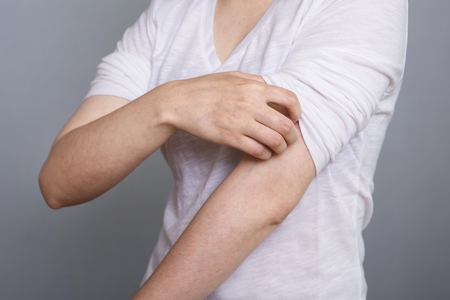1. Understanding Pressure Ulcers: Risk Factors and Prevention
Why Are People with Spinal Cord Injury at Higher Risk?
After a spinal cord injury (SCI), many people experience changes in sensation and movement. This means parts of the body may not feel pain, pressure, or discomfort as they used to. Without these signals, it’s easy to miss the early signs that skin or tissue is getting damaged. Pressure ulcers—also called bedsores or pressure sores—can develop quickly, especially over bony areas like the tailbone, hips, heels, and elbows.
Main Risk Factors for Pressure Ulcers
| Risk Factor | Description |
|---|---|
| Lack of Sensation | Reduced feeling makes it hard to notice discomfort or pain from pressure. |
| Immobility | Staying in one position for too long increases risk. |
| Moisture | Sweat, urine, or stool on the skin weakens it and raises risk of breakdown. |
| Poor Nutrition | Not getting enough protein or calories slows healing and increases risk. |
| Certain Medical Conditions | Conditions like diabetes or poor circulation can make skin more fragile. |
How to Identify Early Warning Signs
The first signs of a pressure ulcer are often subtle and easy to overlook. Watch for:
- Redness or discoloration that doesn’t go away after you change position
- Skin that feels firmer, softer, warmer, or cooler than nearby areas
- Swelling or unusual texture on the skin surface
- Pain or tenderness (if there is sensation)
- An open sore or blistering skin in more advanced cases
Best Practices for Prevention in Daily Life in the U.S.
- Regular Position Changes: Shift your weight every 15-30 minutes if you use a wheelchair. In bed, change positions at least every two hours—even during the night if possible.
- Skin Checks: Make it a daily habit to check your skin from head to toe, using a mirror or with help from a caregiver if needed. Pay extra attention to areas over bones.
- Cushions and Mattresses: Use pressure-relieving cushions in wheelchairs and specialized mattresses or overlays at home. Insurance plans like Medicare often help cover these costs with a doctors prescription.
- Keep Skin Clean and Dry: Clean up sweat, urine, or stool right away. Use gentle cleansers and pat dry instead of rubbing.
- Eat Well and Stay Hydrated: A balanced diet with enough protein helps keep skin healthy and supports healing. Drink plenty of water throughout the day.
- Dress for Comfort: Wear loose-fitting clothes made from soft fabrics to reduce friction on your skin.
- Avoid Smoking: Smoking reduces blood flow to your skin and slows healing, making pressure ulcers more likely.
- Work with Your Care Team: In the U.S., physical therapists, nurses, and occupational therapists are great resources. Ask them about community programs, support groups, and technology available locally for prevention and care.
2. Recognizing and Managing Spasticity
What Is Spasticity?
Spasticity is a common challenge for people living with a spinal cord injury (SCI). It happens when certain muscles continuously contract, causing stiffness or tightness that can make movement difficult. This occurs because the signals between your brain and muscles are disrupted after an SCI.
How Spasticity Impacts Daily Life
Spasticity can affect daily activities in several ways:
- Mobility: Walking, transferring, or even sitting comfortably may become harder due to muscle tightness.
- Hygiene and Self-Care: Tasks like dressing, bathing, or toileting can be more complicated when limbs are stiff.
- Pain and Discomfort: Muscle spasms and tightness can be uncomfortable or even painful.
- Sleep: Nighttime spasms can disturb rest, making it hard to get quality sleep.
Common Signs of Spasticity
| Sign | Description |
|---|---|
| Stiff or Tight Muscles | Muscles feel rigid and are hard to move. |
| Sudden Jerking Movements | Uncontrolled movements of the arms or legs. |
| Painful Muscle Cramps | Cramps that cause discomfort or pain. |
| Trouble with Coordination | Difficulty controlling muscle movements during tasks. |
Managing Spasticity: U.S. Medical and At-Home Strategies
The good news is there are several ways to manage spasticity. These include both medical treatments and at-home strategies commonly used in the United States.
Medical Treatments
- Oral Medications: Drugs like Baclofen, Tizanidine, or Diazepam help relax muscles. Your doctor will choose what’s best based on your needs.
- Baclofen Pump: For severe cases, a pump can deliver medication directly to your spine for better results with fewer side effects.
- Botox Injections: Botox can be injected into specific muscles to help reduce tightness and improve movement.
- Physical Therapy: Working with a physical therapist helps stretch and strengthen muscles, often leading to less spasticity over time.
At-Home Management Tips
- Daily Stretching: Gentle stretching routines—especially for affected areas—can help keep muscles flexible and reduce spasms.
- Regular Exercise: Activities like range-of-motion exercises, yoga, or swimming are encouraged for many people with SCI in the U.S.
- Heat Therapy: Using warm packs or hot showers may help relax stiff muscles (always check skin sensation first).
- Avoid Triggers: Infections, pressure ulcers, or sudden changes in position can worsen spasticity. Keeping up with overall health is key.
- Cushions and Supportive Seating: Using proper wheelchair cushions or positioning aids reduces strain on muscles and joints.
Quick Reference Table: Spasticity Management Methods
| Method | Description | Where Used? |
|---|---|---|
| Baclofen Tablets | Pill form medication for muscle relaxation | Mainly prescribed by doctors in clinics/hospitals |
| Baclofen Pump | Surgically implanted device for severe cases | Larger rehab centers/specialty hospitals in U.S. |
| Physical Therapy | Therapist-guided stretching/exercise programs | MOST rehabilitation clinics/at home with guidance |
| Cushions/Supports | Aids for proper posture and comfort in wheelchairs/beds | Easily available; recommended by therapists nationwide |
| Home Stretching/Exercise Routines | User-led stretching based on therapist advice | MOST U.S. homes with someone managing SCI |
![]()
3. Approaches to Pain Management after SCI
Understanding Types of Pain after Spinal Cord Injury
Pain is a common and often challenging secondary complication for people living with a spinal cord injury (SCI) in the U.S. There are several different types of pain that individuals may experience after SCI, each with its own causes and management strategies. Here’s a simple breakdown:
| Type of Pain | Description | Common Treatments |
|---|---|---|
| Nociceptive Pain | Caused by damage or strain to muscles, bones, or joints below or above the level of injury. This includes musculoskeletal pain and visceral pain from organs. | Physical therapy, acetaminophen, NSAIDs, heat/cold therapy, stretching exercises |
| Neuropathic Pain | Caused by nerve damage at or below the injury site. Often described as burning, tingling, or shooting sensations. | Antidepressants, anticonvulsants (like gabapentin), transcutaneous electrical nerve stimulation (TENS), meditation |
| Other Types (e.g., Central Pain) | Pain that originates from the central nervous system itself due to disrupted signaling. | Prescription medications, psychological support, integrative therapies |
Integrative Pain Management Approaches
The American approach to managing pain after SCI increasingly emphasizes integrative care—combining traditional medicine with complementary therapies. Some widely used integrative approaches include:
- Physical Therapy: Targeted exercises help maintain mobility and reduce musculoskeletal pain.
- Occupational Therapy: Assists with adapting daily activities to minimize pain triggers.
- Mental Health Support: Counseling and support groups help manage emotional distress caused by chronic pain.
- Alternative Therapies: Acupuncture, massage therapy, mindfulness meditation, and yoga are commonly used alongside medical treatments in many American rehab centers.
Prescription Protocols in the U.S.
Pain management often involves prescription medications tailored to the type and severity of pain. Here’s a quick look at commonly prescribed drugs and their uses:
| Medication Type | Purpose | Examples | Cautions/Notes |
|---|---|---|---|
| NSAIDs & Acetaminophen | Mild to moderate nociceptive pain relief | Ibuprofen, Tylenol | Avoid overuse due to possible organ side effects with long-term use |
| Anticonvulsants & Antidepressants | Treat neuropathic pain symptoms | Gabapentin, Amitriptyline | Dose adjustment may be needed; monitor for side effects like drowsiness or mood changes |
| Opioids (short-term use only) | Severe acute pain management when other options fail | Morphine, Oxycodone (rarely long-term due to addiction risk) | Tightly regulated; not recommended for chronic use due to dependency risks |
| Topical Agents & Local Injections | Pain relief for specific areas or trigger points | Lidocaine patches, corticosteroid injections | Mainly used for localized pain; minimal systemic effects but still monitored by healthcare providers |
The Role of Support Systems in the U.S.
Pain management goes beyond medication and therapy—it’s about having strong support systems. In America, hospitals and rehab centers often work with social workers who connect patients with peer support groups and community resources. Family education is also an important part of the process, empowering loved ones to help manage symptoms and advocate for ongoing care. Many people find online forums and local chapters of organizations like the United Spinal Association helpful for sharing tips and encouragement during recovery.
4. Collaborating With Your Rehab Team
Why Teamwork Matters in Managing Secondary Complications
After a spinal cord injury, dealing with secondary complications like pressure ulcers, spasticity, and pain can feel overwhelming. But you don’t have to handle it alone. Working together with your rehabilitation team—including therapists, doctors, nurses, and caregivers—makes a huge difference in preventing and managing these challenges. In the U.S., healthcare providers work as a team to support you on your rehab journey.
Who’s On Your Rehab Team?
| Team Member | Role in Your Care |
|---|---|
| Physiatrist (Rehab Doctor) | Coordinates rehab plan, prescribes treatments |
| Physical Therapist | Helps improve mobility, strength, and manage spasticity |
| Occupational Therapist | Assists with daily activities and adaptive equipment |
| Nurse | Monitors health status and wound care for pressure ulcers |
| Caregiver/Family Member | Supports daily routines and prevention strategies at home |
| Social Worker/Case Manager | Helps coordinate appointments and insurance issues |
Navigating the American Healthcare System: Tips for Patients & Families
- Ask Questions: Don’t hesitate to ask your rehab team about any symptoms or changes you notice.
- Keep Records: Bring notes or photos to appointments to track pressure sores or pain flare-ups.
- Know Your Insurance: Understand what services are covered by your health plan, especially for outpatient therapy and equipment.
- Use Patient Portals: Many clinics offer online systems to message your care team or view test results—take advantage of these tools.
- Create a Care Plan: Work with your team to make a clear plan for skin checks, stretching routines, pain management, and follow-up visits.
- Advocate for Yourself: In the U.S., patients are encouraged to be active participants in their healthcare decisions.
Your Role in the Team Approach
The best outcomes happen when everyone works together. Share updates about your symptoms, follow the routines recommended by your therapists, and let your team know if something isn’t working. Open communication helps prevent complications like pressure ulcers from getting worse and keeps your rehab progress on track.
5. Lifestyle Modifications for Secondary Complication Prevention
Adaptive Strategies for Mobility
After a spinal cord injury (SCI), staying mobile is key to preventing secondary complications like pressure ulcers, spasticity, and pain. In the U.S., many people use adaptive equipment such as power or manual wheelchairs, transfer boards, and standing frames to help with daily movement. Occupational and physical therapists can teach you safe transfer techniques and customized exercise routines that fit your lifestyle and abilities.
| Adaptive Device | How It Helps |
|---|---|
| Pressure-relieving wheelchair cushions | Reduces risk of pressure sores by redistributing weight |
| Standing frames | Helps improve circulation and bone health; reduces spasticity |
| Transfer boards | Makes moving from bed to chair safer and easier |
| Hand controls for vehicles | Supports independent driving and community access |
Nutrition Tips for Skin Health and Spasticity Management
Your diet plays an important role in maintaining healthy skin and managing muscle tone after SCI. Eating enough protein, vitamins (especially A, C, E), and staying hydrated are crucial for wound healing and reducing muscle spasms. In the U.S., registered dietitians can work with you to create meal plans that fit your needs, preferences, and culture.
| Nutrient | Role in Prevention | Food Sources |
|---|---|---|
| Protein | Aids in skin repair and muscle health | Lean meats, beans, eggs, dairy |
| Vitamin C | Promotes collagen production for skin integrity | Citrus fruits, strawberries, broccoli |
| Zinc | Supports wound healing | Nuts, seeds, whole grains |
| Water | Keeps skin hydrated and flushes toxins | Beverages, fruits, vegetables |
Skin Care Routines for Pressure Ulcer Prevention
A consistent skin care routine is vital. Inspect your skin daily—especially bony areas—for redness or changes. Use mirrors or ask caregivers for help if needed. In the U.S., people often set reminders on their phones to shift positions every 15-30 minutes when sitting in a wheelchair. Keeping skin clean and dry helps prevent breakdown. Moisturize regularly but avoid overly wet environments which can increase risk of ulcers.
Daily Skin Care Checklist:
- Check skin twice a day (morning & night)
- Cushion all bony areas when sitting or lying down
- Change position at least every 2 hours in bed; every 30 minutes in a wheelchair
- Use gentle cleansers—avoid harsh soaps or scrubbing
- Keep nails trimmed to avoid accidental scratches or tears in skin
The Role of Advocacy and Peer Support Groups in the U.S.
Across the United States, organizations like the Christopher & Dana Reeve Foundation, United Spinal Association, and local independent living centers offer advocacy services and peer support groups. These groups connect you with others who have similar experiences, share practical tips about secondary complication prevention, and provide emotional support. Joining these communities empowers you to stay informed about resources like accessible recreation programs, adaptive sports leagues, transportation options, legal rights under the Americans with Disabilities Act (ADA), and new medical advances.
Popular U.S.-Based Resources:
- Christopher & Dana Reeve Foundation Peer & Family Support Program (christopherreeve.org)
- United Spinal Association (unitedspinal.org) – Offers advocacy & information on living independently with SCI
- The National Spinal Cord Injury Association (NSCIA website) – Connects people to regional chapters nationwide
- Your local Center for Independent Living – Find one near you at ilru.org directory
The right lifestyle modifications—supported by adaptive equipment, good nutrition, solid skin care habits, and strong community networks—help people with spinal cord injuries across America lead healthier lives while minimizing secondary complications.


